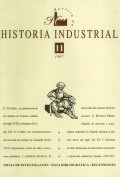La introducción de los merinos en Francia a finales del siglo XVIII y principios del siglo XIX. La pérdida del monopolio español de una materia prima
DOI:
https://doi.org/10.1344/rhi.v0i11.18379Resumen
During severa1 centuries, the fine aborigine Mérinos wool constituted a Spanish wealth that was coveted by France. After several fruitful little attempts, the intervention of Louis XVI, sustained by the physio crates, allowed the introduction of Mérinos and the creation of the «Bergerie de Rambouillet» (royal sheepfold of Rambouillet) in 1786. The signature of the treaty of Base1 in 1795, anticipating the delivery to France of 5000 heads, gave a new impetus to this phenomenon. The French herd increased at the beginning by the XIXth century, thanks to private breeders and to the national sheepfold multiplication.
Nevertheless, the war of Spain in 1808 and the crisis of wool industry in 1811 slowed the expansion. The clumsiness of the State which imposed in I811 a too «adirigiste» policy, discouraged private initiatives committed ten years ago.
In 1815, France possessed an important herd. But a country as the Saxe had better results in its improvement policy and appears as a model for Europe in this area.
Descargas
Descargas
Publicado
Cómo citar
Número
Sección
Licencia
El/la autor/a cede los derechos al/la editor/a. Creative Commons
El/la autor/a que publica en esta revista está de acuerdo con los términos siguientes:
- El/la autor/a cede en exclusiva todos los derechos de propiedad intelectual al/la editor/a para todo el mundo y toda la duración de los derechos de propiedad intelectual vigentes aplicables.
- El/la editor/a difundirá los textos con la licencia de reconocimiento de Creative Commons que permite compartir la obra con terceros, siempre que éstos reconozcan su autoría, su publicación inicial en esta revista y las condiciones de la licencia.





